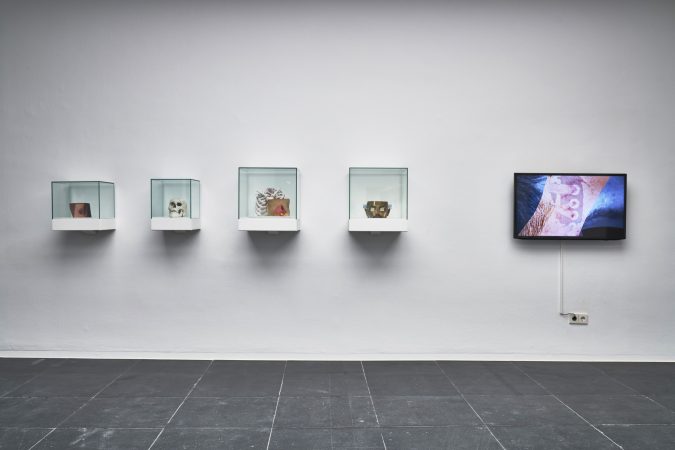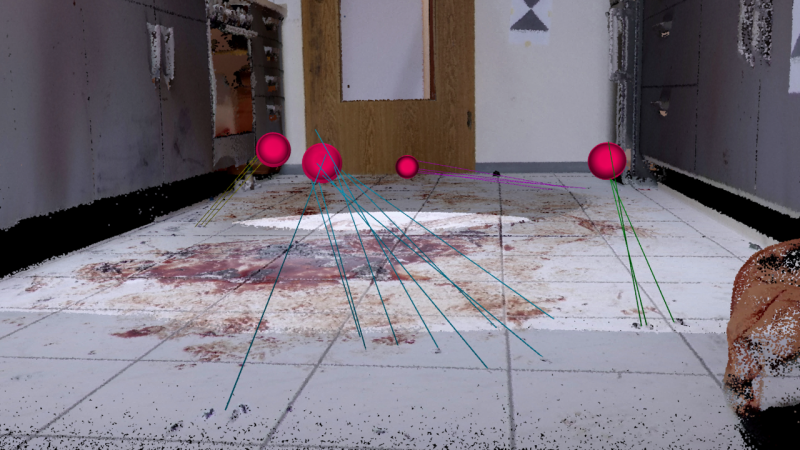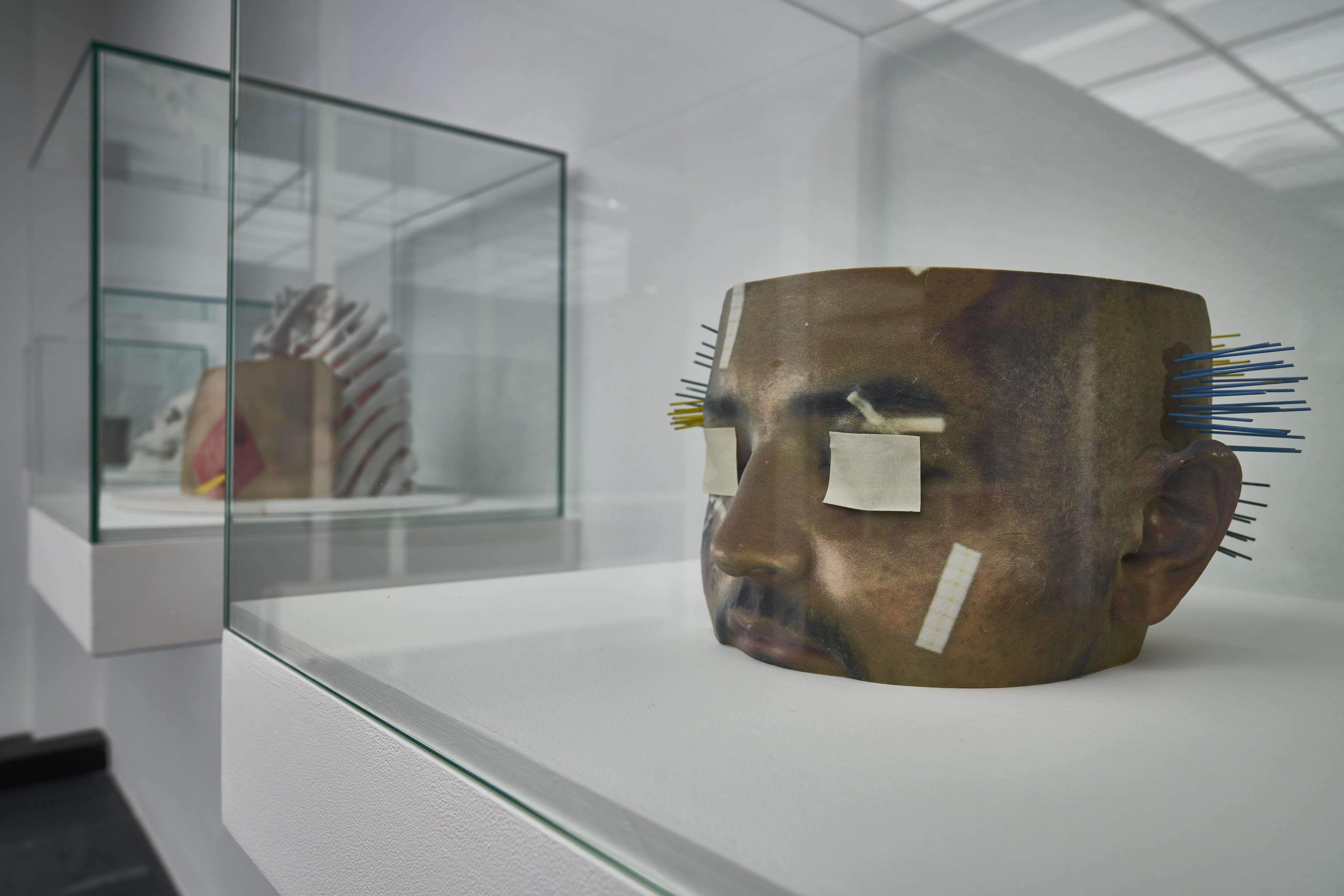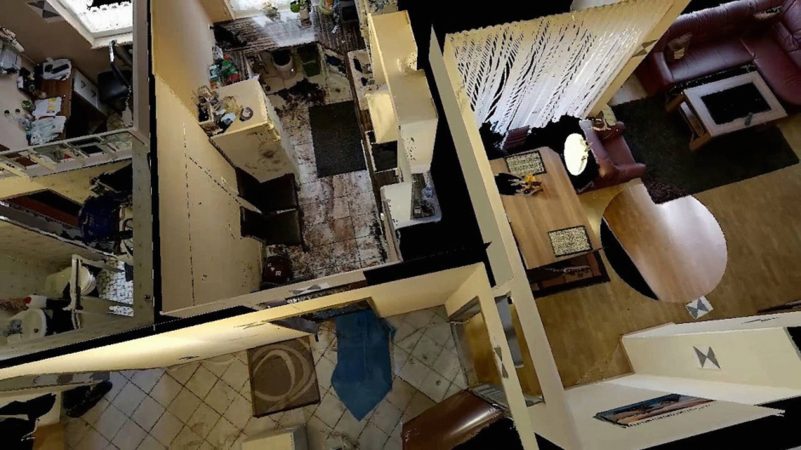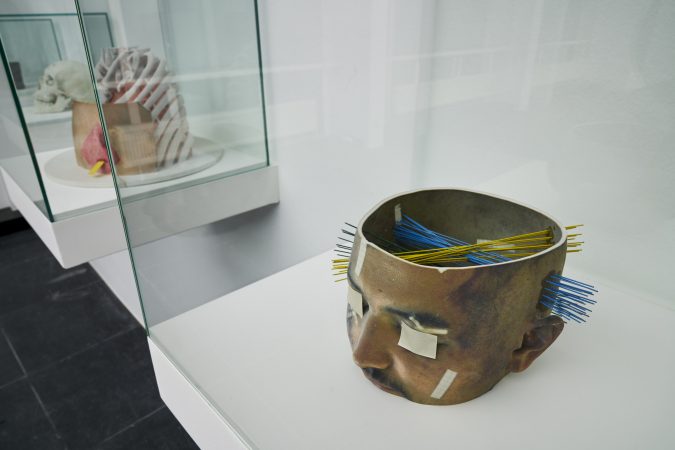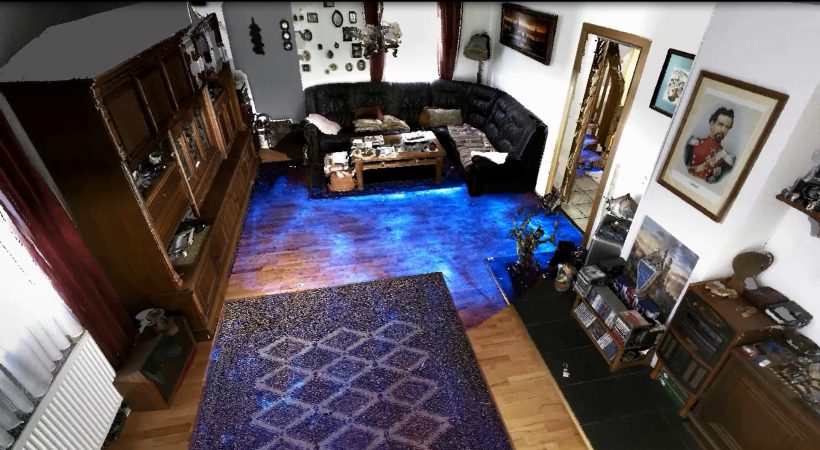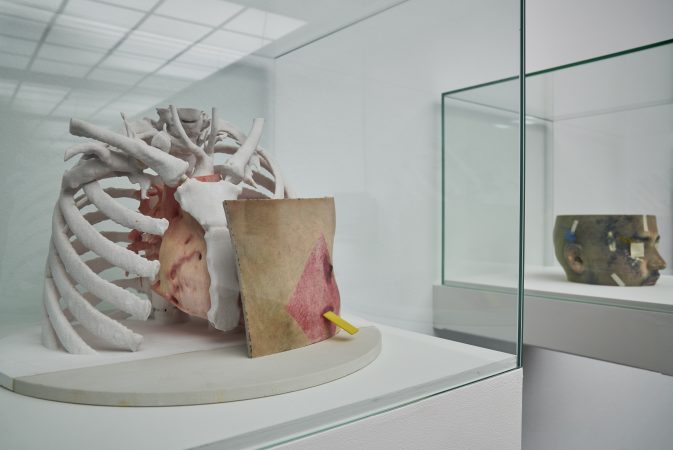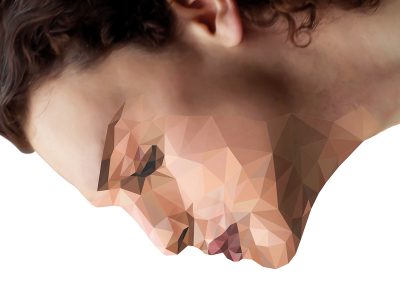Bavarian State Police
Department Central Photo Technology and 3D Crime Scene Mapping
MALE HEAD, 2014
3D-print, plaster mixture
24 x 25 x 15 cm
CHEST, 2014
3D-print, plaster mixture
36 x 46 x 40 cm
SKULL, 2013
3D-print, plaster mixture
16 x 22 x 16 cm
WOUNDED SKIN, 2012
3D-print, plaster mixture
16 x 12 x 6 cm
AUTOPSY
CRIME SCENE LIVING ROOM
CRIME SCENE KITCHEN
SAW MILL
VR-applications
Digital visualizations and representations of crime scenes from the department of “Zentrale Fototechnik und 3D-Tatortvermessung” (Central Photo Technology and 3D Crime Scene Mapping) of the Bayerisches Landeskriminalamt (Bavarian State Police) are made available here to the public for the first time with the help of VR technology. These applications enable us to enter crime scenes and examine them independently of place or time from every conceivable position, whether close-ups or panoramic views. The images are produced by combining various different imaging techniques. Their purpose is to make the scene precisely measurable and interpretable.
Another application comes from the context of forensic medicine. 3D reconstructions of victims’ bodies can be visually examined from the inside, enabling investigators to use observations about the structure of tissues and organs to make inferences about the nature of external acts of violence. During the Renaissance, new measurement techniques and mathematical models enabled new ways of visually representing space, landscapes, and the insides of the human body. Today, measurements with laser scanners, photogrammetric technologies, digital mapping, and image editing software likewise enable us to create three-dimensional representations. Thanks to VR glasses, the viewer can glance though a combination of perspectives, a synthesis of cartography, mathematics, and geodesic knowledge. In these precise reconstructions, one can determine the linear relationship to an object in space, visualize it and change the observer’s respective position in relation to it.
These new methods of precise measurement were developed according to criteria of plausibility. The images visualize data and information, but they must also enable reliable interpretations and be up to date with the latest scientific developments. The Office of Criminal Investigation’s visual world dismantles the Renaissance’s central perspective while also supplementing it with an infinite series of possible perspectives. Technological forensics combines temporally different moments. It unifies them into a visual space while serving both as a photographic crime-scene document and as a form of medical evidence in court.
Currently, these technological applications and visual worlds are still reserved for experts: forensic scientists, criminologists, judges, and lawyers. But in the coming years, it is set to establish itself widely and even replace written records. Virtual worlds are now used to verify witness testimonies as well as to compile and reconstruct evidence, as they are accessible at any time. These immersive environments create spaces for experts to meet virtually and examine evidence. They apply both to current and historical crime scenes reconstructed from available documents (plans, photos, blueprints), such as in Hessen’s State Office for Criminal Investigation’s 3D reconstruction of Auschwitz.

